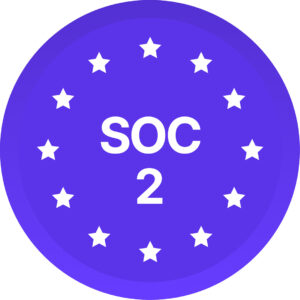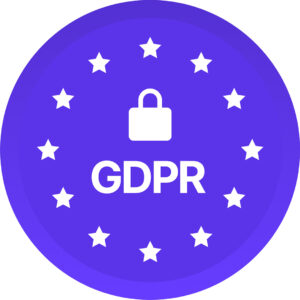When Satya Nadella became CEO of Microsoft, he inherited a company that was iconic but stagnant. Internal silos and a rigid, competitive culture were holding it back. Central to his vision was a shift from a “know-it-all” mindset to a “learn-it-all” culture. He encouraged employees to ask questions, share ideas, and focus on collective growth rather than individual success. That shift sparked a new era of innovation, leading to industry-changing products and a renewed reputation for excellence.
What holds companies back isn’t a lack of resources—it’s a lack of curiosity. Training sessions are easy to offer and just as easy to forget. A real learning culture is different: creating a workplace where curiosity thrives and teams are way better prepared for uncertainty and change.
We will discuss seven strategies to show how to build that kind of culture—one that works for employees and organizations alike.
What is learning culture at the workplace?
A workplace learning culture refers to an organizational environment that prioritizes, encourages, and supports continuous learning, growth, and skill development among employees. And they are not only encouraged to build new skills but are also given the tools and opportunities to do so.
Think of it as the shift from static knowledge to dynamic evolution. In a learning culture, curiosity is far from being just a personal trait—it’s part of the organization’s framework. Employees should feel empowered to ask questions, seek new knowledge, and adapt to the changing demands of their roles.
Why learning culture drives success
When employees grow, teams stop treading water. They become more agile and bring forward ideas that drive competitiveness. A workplace rooted in learning stays ready for whatever comes next.
IBM, which has long invested in its workforce through accessible and tailored learning programs, created opportunities for employees to master emerging technologies before they became mainstream. Initiatives like its SkillsBuild platform and collaborations with universities ensured its teams were equipped with the necessary skills, when markets evolved. It wasn’t just about technical training—IBM fostered a mindset of adaptability, encouraging employees to question old assumptions and explore uncharted solutions.
Beyond retention and adaptability, a learning culture fuels success by unlocking innovation. Teams with continuous access to new skills and ideas don’t wait for change—they create it. Leadership pipelines also strengthen, as employees who grow internally are better prepared to step into critical roles, reducing reliance on costly external hires. Learning improves decision-making too, giving teams the confidence and knowledge to navigate complex challenges. Most importantly, it creates workplaces where employees feel valued and engaged, driving motivation and aligning their growth with the company’s goals.
7 Best practices to build a strong learning culture
Building a learning culture is a mindset shift that changes how organizations grow, solve problems, and stay competitive. Here are seven proven ways to embed learning into the foundation of your workplace.
1. Make learning a leadership priority
If leaders don’t value learning, employees won’t either. A learning culture begins with leaders who actively pursue growth—attending training sessions, engaging in discussions, and admitting what they don’t know.
When leaders visibly invest in their own development, it sends a clear message: growth isn’t optional, it’s expected. Take Satya Nadella, for example. By shifting Microsoft’s leadership from a culture of knowing to one of learning, he encouraged employees to experiment and collaborate. The results transformed a stagnating tech giant into a powerhouse of innovation.
Practical leadership-driven initiatives include mentorship programs, where executives work directly with junior staff, and structured executive learning tracks to expand their skill sets. Leaders who prioritize their own learning show that growth isn’t a one-time event—it’s part of the job.
2. Tie learning initiatives to business goals
Learning disconnected from organizational priorities doesn’t last. Employees need to see how development opportunities contribute to the success of the business and their roles in it.
Think of companies that survived digital transformation. Organizations like Amazon didn’t just teach employees tech skills—they trained them to build systems that would scale globally, ensuring their training aligned with growth objectives.
For example, if your organization is preparing for automation, train employees to adapt their roles and manage new technologies. If innovation is a focus, invest in creative problem-solving workshops or cross-department projects. When learning is tied to outcomes like market growth or efficiency improvements, employees understand its value.
3. Create a psychologically safe environment
People don’t learn when they’re afraid of failure. Psychological safety—the belief that it’s okay to ask questions, share ideas, or admit mistakes—creates the foundation for growth. Just how Pixar runs its “Braintrust” meetings. Participants—directors, writers, and heads of story—critique films in development with candor, not cruelty, knowing early versions are often flawed. But through open feedback, they get better, every time.
Importantly, the Braintrust doesn’t hand out solutions. Directors and their teams own the fixes, keeping their vision intact while pulling in fresh perspectives. The approach worked so well it was adopted at Disney Animation, sparking a creative revival that led to hits like Frozen and Big Hero 6.
To build this environment, train managers to listen and respond without defensiveness. Establish practices like anonymous Q&A sessions, and celebrate thoughtful risks even when they don’t work out. Employees in psychologically safe environments can push boundaries and discover better ways of working.
4. Provide diverse and accessible learning opportunities
Not everyone learns the same way. A robust learning culture offers multiple formats and ensures access for all employees, no matter their schedule or location.
Netflix invests in their workforce with programs like microlearning modules and peer-led workshops. Employees have the flexibility to access learning when it works for them.
Tailored options like short videos, mentoring sessions, and on-demand courses work well. Importantly, ensure underrepresented employees have equal access to these programs. A truly inclusive learning culture recognizes that one-size doesn’t fit all.
5. Use people analytics to measure and improve learning programs
A learning culture doesn’t emerge from goodwill or random acts of training. It grows because someone pays attention—real attention—to what’s working, what isn’t, and what’s missing. That’s what people analytics does, in order to understand how an organization thinks, learns, and adapts.
IBM figured this out long ago. They track everything: does a new skill ripple outward, showing up in better teamwork or faster solutions? Does one person’s growth inspire others to step up? IBM tracks these patterns to make sure learning changes the company for the better.
What data reveals isn’t always comfortable. Analytics will show you where curiosity is dying. It will pinpoint the teams where disengagement has set in and the skills your organization is missing. That’s the gift of data: it forces you to confront the truth. Tools like Diversio’s Platform are able to analyze real-time engagement trends and identifying barriers specific to your workforce. These insights don’t just sit on a dashboard—they guide decisions, helping organizations create a learning culture that reaches everyone.
A real learning culture isn’t static. It’s alive, restless, constantly reshaping itself to meet the moment. Analytics is the heartbeat monitor, telling you whether it’s thriving or fading—and giving you the chance to ensure it thrives.
6. Recognize and reward a growth mindset
A growth mindset is easy to talk about and much harder to see. It doesn’t show up in polished presentations or perfect metrics—it shows up when someone tackles a project they’re not sure they can handle, admits they need help, or sticks with something long enough to figure it out. These are the moments that build a learning culture, and they’re the moments that should never go unnoticed.
Recognition doesn’t need to be flashy. A simple “great job” in front of the team or a quiet thank-you for taking a risk can be more powerful than a bonus. What matters is that people feel seen—not for succeeding, but for trying, growing, and learning along the way. At Salesforce, employees who hit learning milestones on their “Trailhead” platform earn badges and new opportunities, small but meaningful signals that their efforts matter.
When effort is valued, it spreads. People see their colleagues rewarded for stepping up and think, “Maybe I’ll try that too.” A culture where growth is celebrated is one where curiosity doesn’t burn out—it catches fire.
7. Integrate learning into daily work
Learning isn’t effective when it’s confined to workshops or annual training sessions. The best organizations embed it into the flow of work itself.
Google’s famous 20% time is a good example. Employees can dedicate a portion of their schedule to personal projects that still align with company goals. These projects often result in new skills, innovative ideas, and even major products like Gmail.
Start small: schedule “learning hours,” assign stretch projects, or encourage job-shadowing across teams. The goal is to make growth a habit, not a disruption. Learning on the job ensures employees are absorbing knowledge and applying it immediately.
Conclusion: Take the first step towards a thriving learning culture
The beauty of building a learning culture is that it doesn’t require sweeping overhauls. Start small. Create spaces where curiosity can breathe, where asking questions and making mistakes feel safe. Use data to see what’s working and what’s not, then adjust. A thriving learning culture doesn’t appear overnight—it evolves, one decision at a time.
Tools like Diversio’s People & Culture Analytics Platform are built for this kind of evolution. They help you uncover what your workforce needs, where the barriers are, and how to make learning accessible to everyone. If you want to build a workplace that’s smarter, stronger, and ready for whatever comes next, it starts with understanding your people. The first step isn’t hard—but it’s the most important one.





